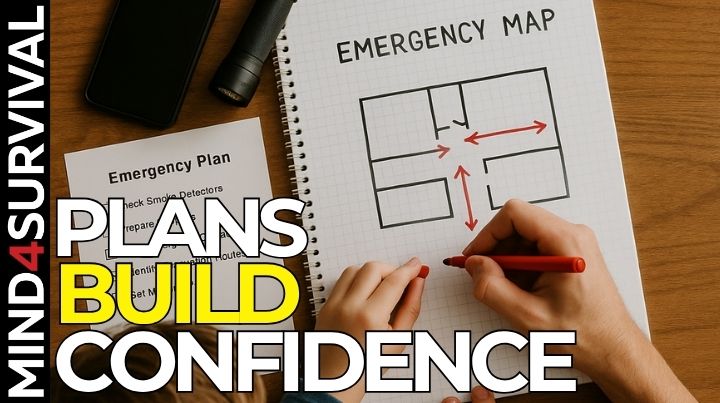Political Violence Preparedness That Works!

Podcast: Play in new window | Download
The Boiling Point We’re Ignoring
Political violence preparedness in America isn’t new—but as 2025 unfolds, it’s need is rising fast and hitting closer to home than many people realize. While still statistically unlikely, the sheer increase in frequency, along with political tension, raises the chance that you or someone you care about might get caught in the wrong place at the wrong time.
This article isn’t here to scare you. It’s here to give you clarity:
- So you can understand the trend—uncomfortable or not—and how it shifts your risk profile.
- And so you can walk away with practical, realistic steps to be more ready, no matter your situation.
TL;DR: Political violence is rising and becoming normal. This article shows what’s happening, why it matters, and how to prepare—wherever you live.
Quick Look at What You’ll Learn
Normalizing Violence: A Dangerous Shift
In Iraq, I watched society adjust to daily car bombings—people barely flinched at the sound. In Afghanistan, families sent kids into minefields for scrap explosives. And, in both places, suicide bombers became glorified, even fashionable. Violence became the background noise of everyday life.
That’s what normalization looks like—and that’s the trendline I see starting to form here in the U.S.
Once violence becomes an accepted tool for political expression, the bar lowers for who uses it, when, and how. It becomes not just permissible, but expected.
2025 Flashpoints: What’s Actually Happening
These recent attacks weren’t random. They were motivated by ideology, carefully planned, and targeted at soft civilian or symbolic government-connected targets.
- Washington, D.C. (Israeli Embassy Shooting – May 22, 2025): Two embassy-affiliated staffers were shot and killed outside the Capital Jewish Museum following a diplomatic event. The attacker shouted pro-Palestinian slogans and had scouted the venue in advance.
- Palm Springs, CA (Fertility Clinic Bombing – May 17, 2025): A 25-year-old man with radical anti-natalist beliefs—opposed to human reproduction—detonated a VBIED in a clinic parking lot. He killed himself and injured several others. A manifesto was found detailing his extreme views against human reproduction.
- Michigan (Foiled ISIS Terror Plot – May 2025): 19-year-old Ammar Abdulmajid-Mohamed Said was arrested while planning a mass shooting at the U.S. Army’s TACOM facility in Warren, MI. He used drones for surveillance and had prior military ties. His arrest came just days before the planned attack.
- New Orleans, LA (ISIS Truck Attack – Jan 1, 2025): Former Army Reservist Shamsud-Din Jabbar killed 14 and injured 57 after ramming a pickup truck through a crowd in the French Quarter during Super Bowl weekend. Police killed him in a shootout. IEDs were found in his vehicle. This was a soft target exploited at maximum density.
Why This Matters: Violence Is Now a Political Language
Traditionally, Americans resolved conflict through protest, debate, and policy. But the societal norm is shifting.
Violence is becoming a language of expression. Every attack, every live-streamed manifesto, every viral story is encouragement for the next. That’s what normalization looks like—and it affects every one of us.
What This Means for You
You don’t have to be political to become a casualty of political violence. You just need to be in the wrong place at the wrong time.
Grocery store. Church. Rally. Game. Museum. Anywhere.
The question is no longer “Could it happen?” The question is, “Will you be ready when it does?”
Tips: Preparedness Starts with Who You Are
Whether you’re brand new to preparedness or years into it, these identity-based tips are tailored to where you’re at—and what you face.
👉 For the Skeptical Newcomer
You might be thinking, “This feels like paranoia.” If it were 1995, you might be right. But this is 2025, and political violence is trending.
Simple steps:
- Ask yourself: What would I do if X happened while I’m out?
- Keep tabs on your loved ones—and have them do the same.
- Create check-in routines and safe meet-up points.
- Don’t ignore your gut. If something feels wrong, act on it.
👉 For the Family Protector
You’ve got a lot going on—work, kids, life. But you also think about your family’s safety. The good news? A few small wins can go a long way.

Focus on:
- Teaching situational awareness without scaring the kids. Start small.
- Identifying primary and alternate routes for your daily travels.
- Making check-ins a daily family habit.
- Running micro-drills for school, store, and vehicle emergencies.
👉 For the Urban & Suburban Survivalist
You’re in a people-dense environment. More people = more targets. That doesn’t mean panic. It means plan.
Key habits:
- Stay updated on alerts, protests, and local flashpoints.
- Avoid large crowds when you can. Don’t get stuck in the barrel.
- Shop or travel during low-traffic hours.
- Always know your exits. Run scenarios in your head.
- Build a dispersed local network. If one area locks down, you’ve got options.
👉 For the Rural Prepper
You’re isolated—but not immune. When cities pop, the shockwaves ripple outward.

What to consider:
- Be extra cautious when entering town. Locals may sense tension you don’t.
- Plan for unplanned guests. You might become their bug-out location.
- Watch for disruptions, such as fuel, food, or sudden restrictions.
- Keep the essentials squared away—food, water, power, and a plan.
What This Means for an SHTF Outlook
If this trend continues, here are three likely effects:
- Retaliation Cycles: Political violence begets more political violence—like we’ve seen in Iraq and other hotspots.
- Government Crackdowns: Expect tighter controls. Think lockdowns, surveillance, maybe worse.
- Normalization Spiral: The more it happens, the more copycats emerge. We’ve seen it globally. We’re watching it happen here.
Bottom Line on Prepping for Political Violence
This trend isn’t slowing down. More people are turning to violence to promote their cause or punish someone else’s. And each time it happens, another person watches and thinks, “Why not me?”
This isn’t about fear. It’s about readiness.
It’s about being honest about what’s happening.
And it’s about staying mentally, physically, and situationally prepared.
Run the mental reps. Plan your routes. Keep your gear ready.
Think. Train. Prepare.
Let Me Hear From You
What’s your take? Are you seeing signs of political violence creeping into your town or community?
What are you doing differently now that you weren’t doing a year ago?
Drop a comment below. Let’s talk about it.
Additional Resources

Read the full article here








